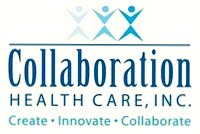
No matter what final result transpires from the health care reform debacle, the process has already cost the health care system the last sliver of a valuable asset that is going to be required to make it all work- trust. Now, I’m not saying that there has ever been much trust in the system we have today. But, the process we have just witnessed drained whatever remaining trust there may have been.
Consider some of the numbers:
Only 40% of us trust hospitals as a source of healthcare information.
Most of us rely on our physicians for trusted health information, but over half look to other sources to make health decisions
Over half of us think since “managed care” was introduced in the 70’s, it is a bad thing that sacrifices quality of care for profits (and I am sure with the Administration’s current tirade against insurance companies this number is going to plummet further. We do not trust insurance companies).
Just 21% of us believe the federal government enjoys the consent/trust of the governed. According to Rasmussen Reports, Congressional job disapproval jumped 10% from just last month to over 71%.
Over 80% believe Congress is more interested in their own careers rather than serving the people.
Only 1/3 of us trust or have confidence in the employers we work for.
And, these are the groups we’re going to rely on to get us “engaged” and “actively participate” in our health and the health care system?
I don’t think it’s going to happen unless something changes dramatically.
When you think about it, if you break down all of the complexities we have created in health care you are dealing with four basic groups: the consumers- who receive the care when needed; the providers- deliver the care and help the population stay healthy; the intermediaries- process the transactions and coordinate the finances; and the government- to oversee the social interests of the system (and in the current cases of Medicare, Medicaid, etc. to act as an intermediary).
Yes, there are also employers, medical devices, pharmaceuticals, and thousands of sub-segments that are all part of the system as well, but they can be placed into one of the four basic categories above. Let’s keep it simple.
In our utopian world, these four segments are equally important and rely on a significant amount of trust between each other to optimize opportunities and maximize results individually and collectively. Consumers are engaged, and providers, intermediaries, and the government work together to support and organize care delivery.
That is not what is happening.
We all know these numbers as well:
80% of the costs are chronic, and well over half of these costs are related to the lifestyles we lead- they could be avoided:
Nearly 40% of us participate in no leisure-time physical activity
Only 12% exercise at least 5 times per week
60% are overweight
Well over half are stressed
Employers and health plans (in the intermediary segment) are offering more wellness-related programs and “wellness” (in a broad governmental sense) is at least being discussed as part of reform legislation. Despite all of this, according to Forrester Research only 11% of employees are engaged in any wellness activity offered through an employer. Some of us are trying to stay healthy on our own, but most of us are not.
Consumers (those creating the costs) do not trust the system we have. We don’t trust the intermediaries and we don’t trust the government. We will trust our providers some of the time but that is about it.
The government can enact all of the legislation that it wants. Employers and health plans can throw all of the new wellness gimmicks they can think of to try to “incent” us to do the right things. But, until the system (intermediaries, providers, and government) starts to regain the trust it has lost, it is just not going to happen. We will be looking elsewhere for health and wellness support, if we look at all. In the meantime, health care continues to get more expensive.
In his book, “The Trust Crisis in Health Care”, Harvard professor David Shore, PhD. states, “Trust, in short, is the bedrock- the very foundation- of healthcare.”
If that is the case, we are on very shaky footing with the foundation we have created today.







